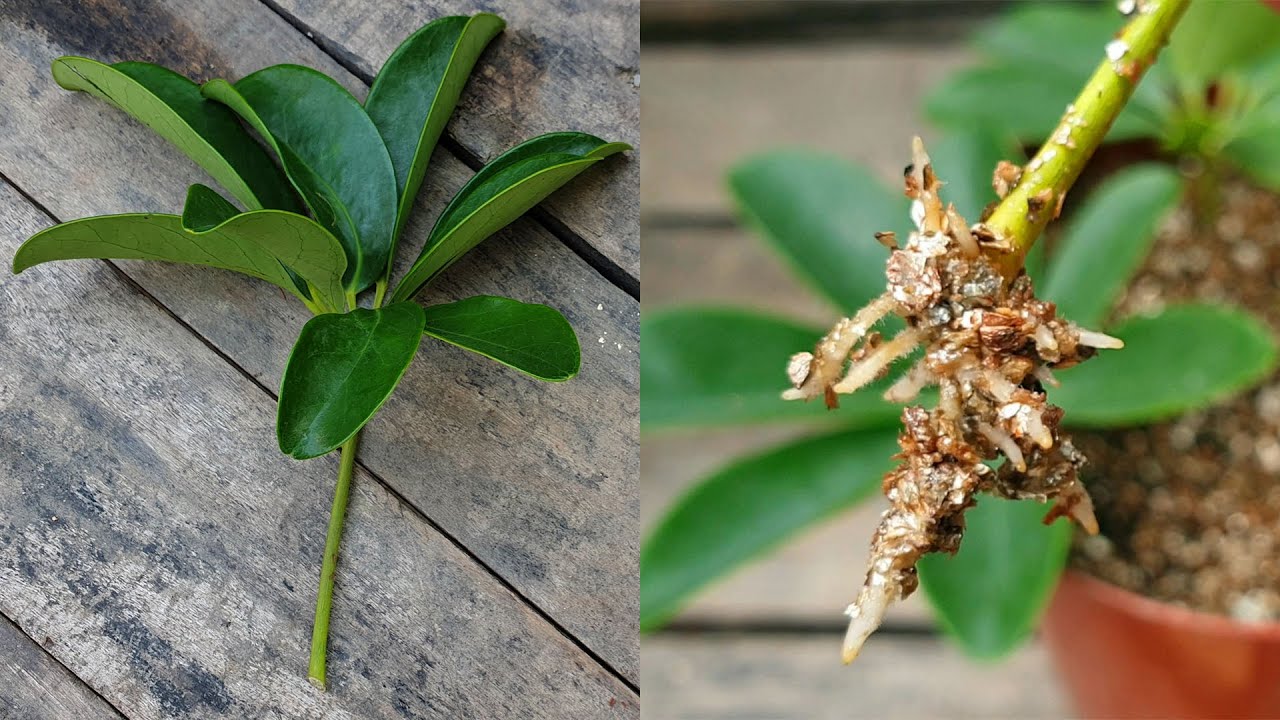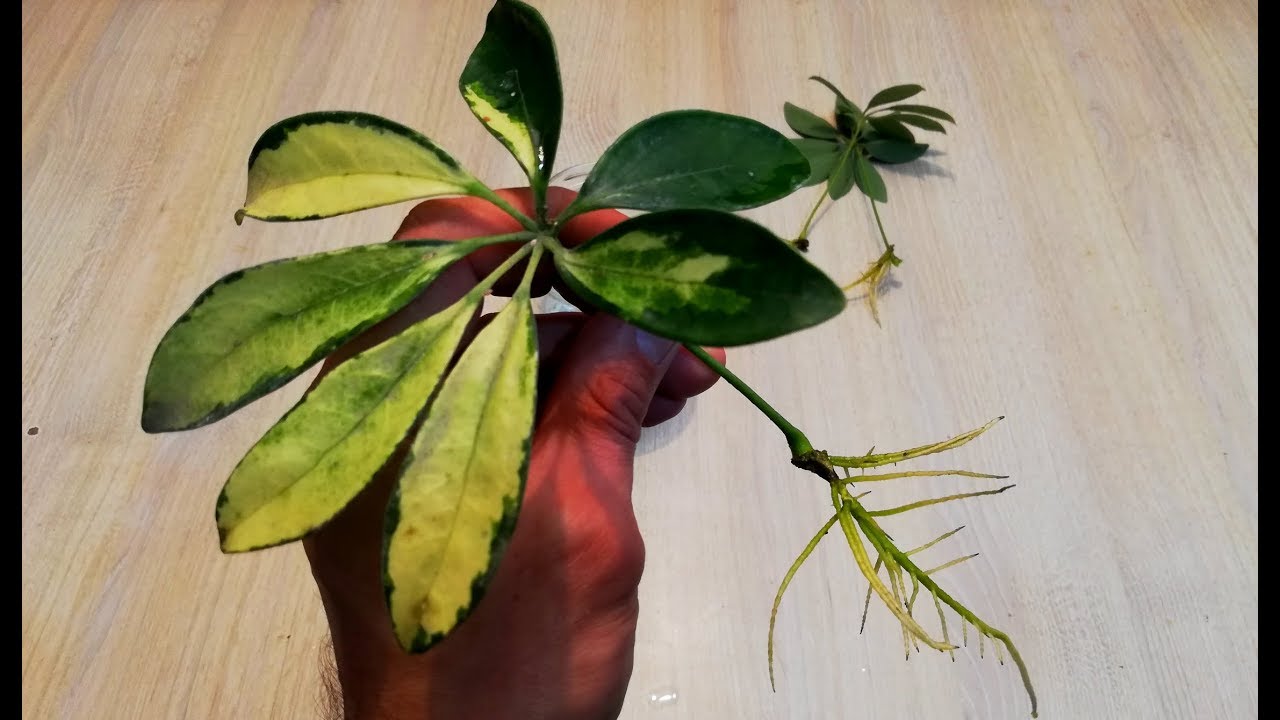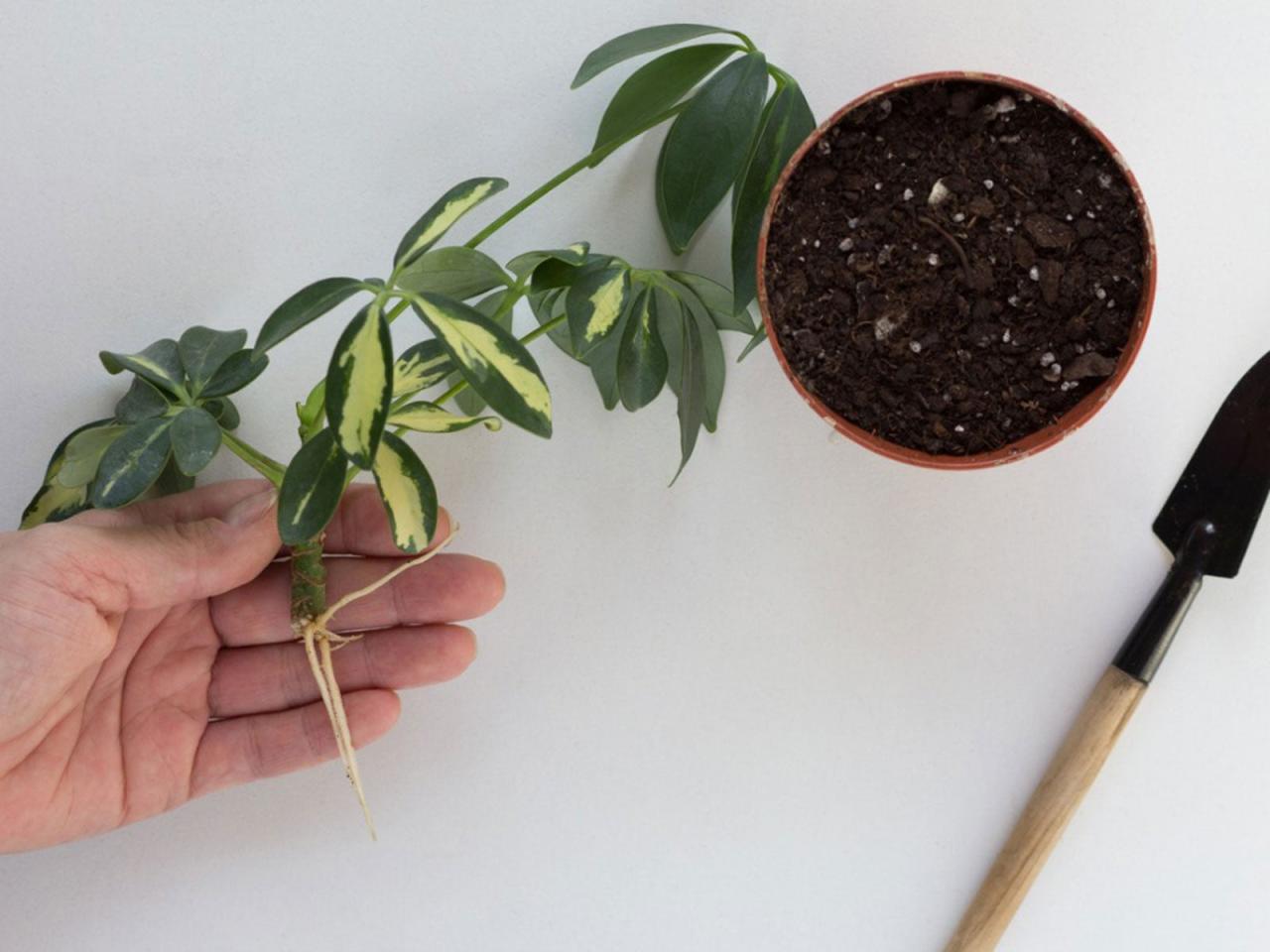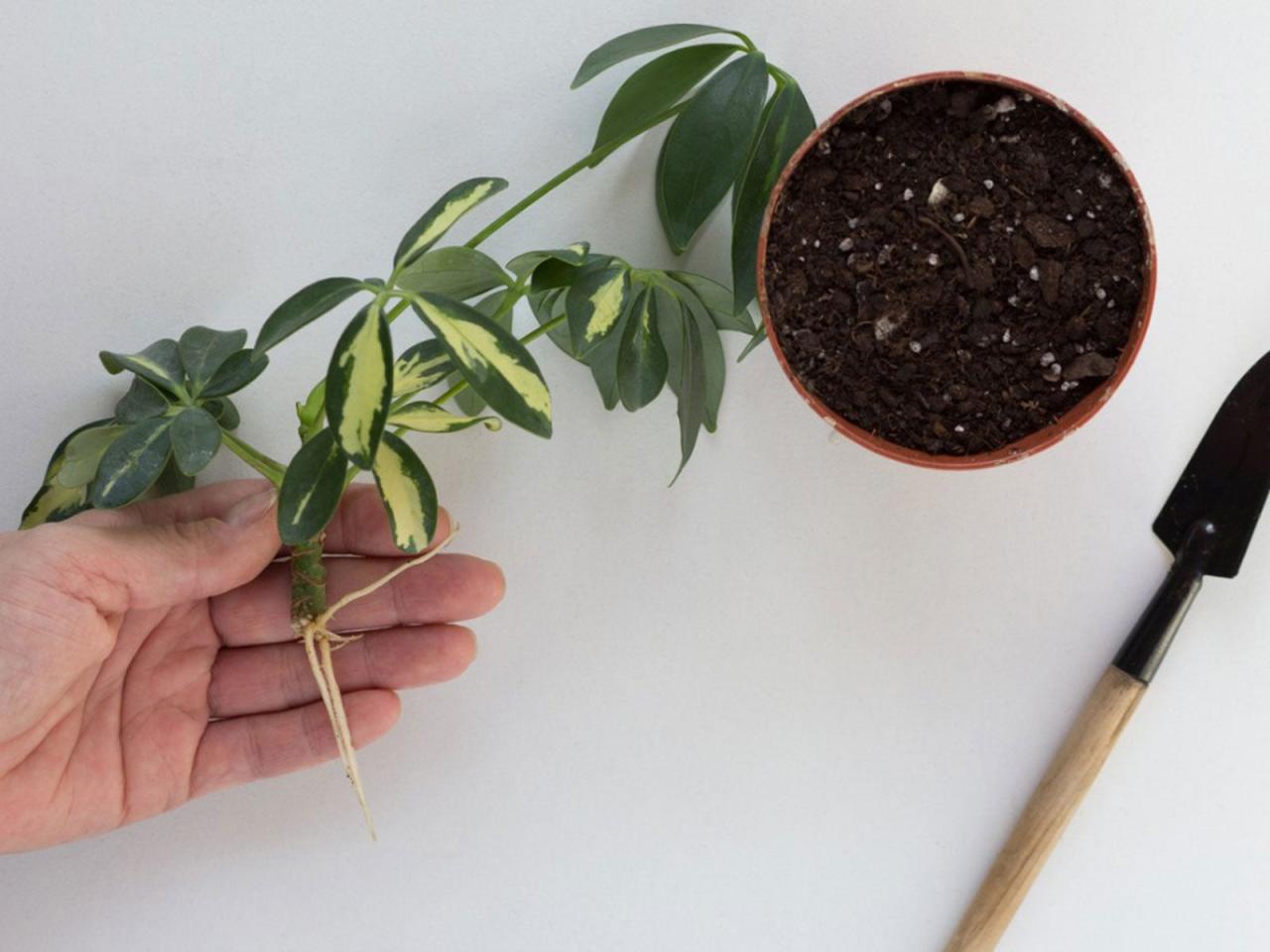How to Propagate Schefflera for a Thriving Indoor Garden: The Schefflera plant, also known as the umbrella tree, is a popular choice for indoor gardens due to its lush foliage and low-maintenance nature. But did you know that you can easily propagate new Schefflera plants from existing ones, expanding your indoor jungle without breaking the bank?
This guide will walk you through the different methods of propagating Schefflera, from stem cuttings to air layering and seed propagation, equipping you with the knowledge to cultivate your own vibrant Schefflera collection.
Whether you’re a seasoned plant parent or a budding green thumb, propagating Schefflera is a rewarding experience that allows you to share your love of these stunning plants with others or simply add more greenery to your home. With a little patience and the right techniques, you’ll be amazed at how effortlessly you can create new Schefflera plants to enhance your indoor garden’s beauty and tranquility.
Understanding Schefflera Propagation

Schefflera propagation is a rewarding process that allows you to expand your indoor garden with these stunning plants. There are several methods you can use to propagate Schefflera, each with its own set of advantages and disadvantages. Understanding the nuances of each method will help you choose the best approach for your specific needs and plant variety.
Stem Cuttings
Stem cuttings are the most common and straightforward method for propagating Schefflera. This method involves taking a section of healthy stem with several nodes and rooting it in a suitable medium.
- Advantages: Stem cuttings are relatively easy to take and have a high success rate. They are also a fast method, with new roots developing within a few weeks.
- Disadvantages: Stem cuttings can be susceptible to rot if not properly cared for.
Air Layering
Air layering is a technique that involves encouraging roots to develop on a stem while it is still attached to the parent plant. This method is particularly suitable for Schefflera varieties that are difficult to root from cuttings.
- Advantages: Air layering produces a new plant with a well-established root system, which increases its chances of survival.
- Disadvantages: Air layering can be a more time-consuming process than stem cuttings, and it requires some practice to master.
Seed Propagation
Seed propagation is the least common method for propagating Schefflera, as it can be a lengthy and unpredictable process. Seeds are typically collected from mature fruit and sown in a seed tray or pot.
- Advantages: Seed propagation allows you to grow a large number of Schefflera plants from a single seed source.
- Disadvantages: Seed propagation can take several months for germination, and the resulting plants may not be true to type.
Choosing the Best Propagation Method
The best propagation method for your Schefflera will depend on several factors, including the plant variety, your experience level, and the time you have available.
- For beginners: Stem cuttings are the easiest and most reliable method to start with.
- For experienced gardeners: Air layering can be a rewarding challenge for those who want to try a more advanced propagation technique.
- For specific varieties: Some Schefflera varieties may be easier to propagate through specific methods. For example, air layering is often recommended for Schefflera arboricola, while stem cuttings are more successful for Schefflera actinophylla.
Preparing for Propagation
Before embarking on the propagation journey, it is crucial to gather the necessary materials and prepare your Schefflera plant for a successful propagation process. This section will provide a detailed guide on how to prepare your Schefflera plant and the essential materials needed for each propagation method.
Materials for Propagation
The materials needed for Schefflera propagation vary depending on the method chosen. Here is a comprehensive list of materials required for each propagation method:
- Air Layering:
- Sharp knife or pruning shears
- Rooting hormone (optional)
- Sphagnum moss
- Plastic wrap
- String or tape
- Stem Cuttings:
- Sharp knife or pruning shears
- Rooting hormone (optional)
- Small pots or propagation trays
- Potting mix
- Leaf Cuttings:
- Sharp knife or pruning shears
- Rooting hormone (optional)
- Small pots or propagation trays
- Potting mix
Preparing the Schefflera Plant
Before taking cuttings or attempting air layering, it is essential to prepare your Schefflera plant for propagation. This involves ensuring the plant is healthy and vigorous, which will increase the chances of successful propagation. Follow these steps:
- Select a healthy Schefflera plant:Choose a plant that is free from pests and diseases, with strong stems and healthy foliage.
- Water the plant thoroughly:Ensure the soil is moist before taking cuttings or initiating air layering. This helps maintain hydration and promotes successful root development.
- Prune the plant:Prune any dead or diseased stems or leaves. This encourages new growth and enhances the plant’s overall health.
Environmental Conditions
Providing the right environmental conditions is crucial for successful Schefflera propagation. The optimal temperature, humidity, and light requirements are as follows:
Environmental Factor |
Optimal Range |
Explanation |
|---|---|---|
Temperature |
65-75°F (18-24°C) |
Warm temperatures promote root development. |
Humidity |
High humidity |
Schefflera prefers humid environments, which helps prevent cuttings from drying out. |
Light |
Bright, indirect light |
Avoid direct sunlight, which can scorch the cuttings. |
Stem Cutting Propagation
Stem cutting propagation is a simple and effective method for multiplying your Schefflera plant. This technique involves taking a section of a healthy stem and encouraging it to develop roots, creating a new plant.
Selecting and Preparing Stem Cuttings
Stem cuttings are typically taken from healthy, mature stems that are at least 6-8 inches long. The ideal cutting should have several nodes, which are the points on the stem where leaves grow. These nodes contain the potential for root development.To prepare the stem cutting for rooting, follow these steps:
- Using a sharp, clean knife or pruning shears, make a cut just below a node.
- Remove the leaves from the bottom 2-3 inches of the cutting. This helps to prevent rot and encourages root growth.
- Optional: Dip the cut end of the stem in rooting hormone powder. This can help to stimulate root growth.
Rooting Mediums for Schefflera Propagation
The choice of rooting medium plays a significant role in the success of stem cutting propagation. Different mediums offer varying levels of moisture retention, aeration, and nutrient availability.
Rooting Medium |
Suitability for Schefflera |
Advantages |
Disadvantages |
|---|---|---|---|
Water |
Not recommended |
Easy to monitor moisture levels |
Increased risk of rot, limited nutrient supply |
Perlite |
Suitable |
Excellent drainage, good aeration |
May dry out quickly, needs frequent watering |
Vermiculite |
Suitable |
Good moisture retention, provides some nutrients |
Can become compacted, may need additional aeration |
Peat Moss |
Suitable |
Good moisture retention, provides nutrients |
Can become compacted, may need additional aeration |
Coco Coir |
Suitable |
Good moisture retention, provides nutrients, sustainable |
Can be difficult to manage moisture levels |
Soil-based mix |
Suitable |
Provides nutrients, good structure |
May be prone to disease, can become compacted |
Air Layering Propagation

Air layering is a propagation technique that involves encouraging root development on a stem while it’s still attached to the parent plant. This method is particularly effective for Schefflera, allowing you to create new plants without relying solely on stem cuttings.
Steps Involved in Air Layering
Air layering involves creating a wound on the stem, promoting root growth by encouraging callus formation. The wound is then covered with a moist medium to facilitate root development. Here’s a detailed breakdown of the process:
Selecting the Stem
Choose a healthy, mature stem that’s at least 1/2 inch in diameter and has several nodes (where leaves grow). The stem should be flexible enough to bend without breaking.
Propagating Schefflera is a rewarding way to expand your indoor garden, and while the process itself is relatively simple, it’s best to time it with the changing seasons. As autumn arrives, consider visiting Harvest Moon Orchard: A Guide to Autumn’s Best Activities for inspiration and to enjoy the vibrant colors of the season.
Once you’re back home, you can get started with your Schefflera propagation, knowing that the cooler temperatures and shorter days provide ideal conditions for successful rooting.
Making the Incision
Use a sharp, sterile knife or pruning shears to make a circular incision around the stem, about 1 inch below a node. The incision should be deep enough to expose the cambium layer, which is responsible for root growth.
Applying Rooting Hormone
After making the incision, apply a rooting hormone powder or gel to the exposed cambium layer. This helps stimulate root development.
Wrapping the Cut Area
Wrap the cut area with moist sphagnum moss or a rooting mix. Secure the moss with plastic wrap or aluminum foil, ensuring that the moss remains moist.
Propagating Schefflera is a simple way to expand your indoor garden. Similar to the techniques for cultivating a vibrant collection of carnivorous plants, such as those described in Venus Fly Trap Propagation for Beginners: An Easy Guide , Schefflera propagation is a rewarding experience for beginners.
Whether you choose stem cuttings or air layering, you’ll soon be enjoying the lush greenery of your new Schefflera plants.
Maintaining Moisture
Keep the moss moist by periodically misting it with water. The humidity created within the wrapping will encourage root growth.
Monitoring Root Development
After several weeks, check for root development by gently pulling on the plastic wrap or foil. If roots are present, they will be visible through the wrapping.
Separating the New Plant
Once the roots are well-developed, cut the stem below the wrapped area and remove the wrapping. Plant the new Schefflera in a pot with well-draining potting mix.
Ideal Time of Year for Air Layering
The best time of year for air layering Schefflera is during the spring or early summer when the plant is actively growing. This period allows the plant to dedicate more energy to root development, leading to a higher success rate.
Seed Propagation
Schefflera seeds are a viable option for propagating new plants, offering a unique and rewarding experience. While this method requires more patience than cuttings or air layering, it allows you to cultivate multiple plants from a single seed pod.
Collecting and Preparing Seeds
Schefflera seeds are found within small, berry-like fruits that mature to a reddish-purple color. The seeds are typically collected from the fruit after it has ripened on the plant.
- Harvesting Seeds:Once the fruit has turned a deep red or purple, gently pluck it from the plant and place it in a container.
- Removing Seeds:Carefully break open the fruit and extract the seeds. Each fruit usually contains multiple seeds.
- Cleaning Seeds:Wash the seeds thoroughly in water to remove any remaining pulp or debris. Allow the seeds to dry completely before storing.
Sowing Seeds
After preparing the seeds, they are ready for sowing. Choose a well-draining seed-starting mix or a mixture of peat moss, vermiculite, and perlite.
- Seed Trays or Pots:Fill seed trays or small pots with the prepared seed-starting mix.
- Sowing Depth:Gently press the seeds into the soil, burying them about ¼ inch deep. Space the seeds about 1 inch apart.
- Watering:Lightly water the soil after sowing the seeds. Avoid overwatering, as this can lead to root rot.
- Covering:Optionally, you can cover the seed tray with a clear plastic dome or wrap to create a humid environment.
Growing Conditions, How to Propagate Schefflera for a Thriving Indoor Garden
Schefflera seeds need consistent warmth and indirect sunlight to germinate.
- Temperature:Maintain a temperature of 70-75°F (21-24°C) for optimal germination.
- Light:Place the seed tray in a bright location with indirect sunlight. Avoid direct sunlight, as it can scorch the delicate seedlings.
- Watering:Keep the soil consistently moist but not waterlogged. Water when the top inch of soil feels dry to the touch.
Germination and Seedling Development
Stage |
Expected Time |
Description |
|---|---|---|
Germination |
2-4 weeks |
The first signs of growth, with the emergence of a small green shoot. |
Seedling Growth |
4-8 weeks |
The seedling develops its first true leaves, gradually becoming stronger and more established. |
Transplanting |
6-8 weeks |
When the seedlings have developed a few sets of true leaves, they can be transplanted into individual pots. |
Caring for Propagated Schefflera: How To Propagate Schefflera For A Thriving Indoor Garden
Once your Schefflera cuttings have successfully rooted, you’ll need to provide them with the right care to ensure they thrive. This involves creating a conducive environment for growth, with proper watering, fertilization, and light exposure. Acclimatizing the propagated plants to their new environment is also crucial for their long-term health.
Watering Propagated Schefflera
Proper watering is essential for the healthy growth of newly propagated Schefflera plants. You need to strike a balance, avoiding both overwatering and underwatering. Here are some key points to consider:
- Check the soil moisture:Before watering, always check the soil moisture. Insert your finger about an inch deep into the soil. If it feels dry, it’s time to water.
- Water thoroughly:When you water, do so thoroughly until water drains from the drainage holes. This ensures that the roots are adequately hydrated.
- Allow the soil to dry slightly:Between waterings, allow the top inch or two of the soil to dry slightly. This helps prevent root rot.
Fertilizing Propagated Schefflera
Newly propagated Schefflera plants don’t require heavy fertilization initially. Their focus should be on establishing a strong root system. However, once the plants start showing active growth, you can start fertilizing them.
- Use a balanced liquid fertilizer:A balanced liquid fertilizer, with a ratio of NPK (nitrogen, phosphorus, potassium) like 20-20-20, is suitable for Schefflera.
- Dilute the fertilizer:Always dilute the fertilizer according to the manufacturer’s instructions. Too much fertilizer can burn the roots.
- Fertilize during the growing season:Fertilize your Schefflera plants every two to four weeks during the growing season, which is typically from spring to fall.
Light Requirements for Propagated Schefflera
Schefflera plants prefer bright, indirect light. They can tolerate some direct sunlight, but it’s best to avoid exposing them to harsh midday sun, which can scorch their leaves.
- Place near a window:Place your propagated Schefflera plants near a window that receives bright, indirect light. East- or west-facing windows are ideal.
- Rotate the plants:Rotate your plants regularly to ensure all sides receive equal light. This promotes even growth.
- Monitor for light stress:Watch for signs of light stress, such as pale leaves or legginess. If your plant is not getting enough light, it will stretch towards the light source.
Acclimatizing Propagated Schefflera
Acclimatizing your newly propagated Schefflera plants to their new environment is crucial for their survival. This process helps them adjust to the changes in light, humidity, and temperature.
- Gradual introduction:After rooting, gradually introduce your plants to their permanent location. Start by placing them in a sheltered spot with bright, indirect light for a few days.
- Increase exposure:Gradually increase the amount of light and air circulation they receive over a week or two.
- Monitor for signs of stress:Watch for signs of stress, such as wilting or leaf drop. If you see any, adjust the acclimatization process accordingly.
Identifying and Addressing Potential Issues
While propagating Schefflera is generally straightforward, some issues can arise. It’s essential to be aware of these issues and take steps to address them.
- Root rot:Overwatering is the most common cause of root rot. Signs of root rot include wilting leaves, yellowing leaves, and a foul odor from the soil. To address root rot, remove the plant from the pot, trim away any rotted roots, and repot it in fresh, well-draining soil.
- Leaf drop:Leaf drop can be caused by various factors, including overwatering, underwatering, low humidity, or sudden temperature changes. To address leaf drop, try to identify the underlying cause and adjust your care accordingly.
- Pests:Schefflera plants are susceptible to pests like spider mites, mealybugs, and aphids. Regularly inspect your plants for signs of pests and take appropriate measures to control them.
Closure

With a little effort and the right knowledge, propagating Schefflera is a rewarding experience that allows you to expand your indoor garden and share your love of these stunning plants with others. Whether you choose stem cuttings, air layering, or seed propagation, each method offers unique advantages and challenges.
By following the steps Artikeld in this guide and paying close attention to your plants’ needs, you’ll be well on your way to cultivating a thriving collection of Schefflera plants that will bring beauty and joy to your home for years to come.
FAQs
What is the best time of year to propagate Schefflera?
The best time to propagate Schefflera is during the spring or summer when the plant is actively growing. This is when the plant has the most energy for rooting and new growth.
How do I know if my Schefflera cutting has rooted?
You can check if your Schefflera cutting has rooted by gently tugging on the stem. If it feels firmly attached, it has likely rooted. You can also look for new growth, which indicates that the cutting is taking root.
What should I do if my Schefflera cuttings are not rooting?
If your Schefflera cuttings are not rooting, you may need to adjust the environmental conditions, such as humidity or temperature. You can also try using a different rooting medium or rooting hormone.
